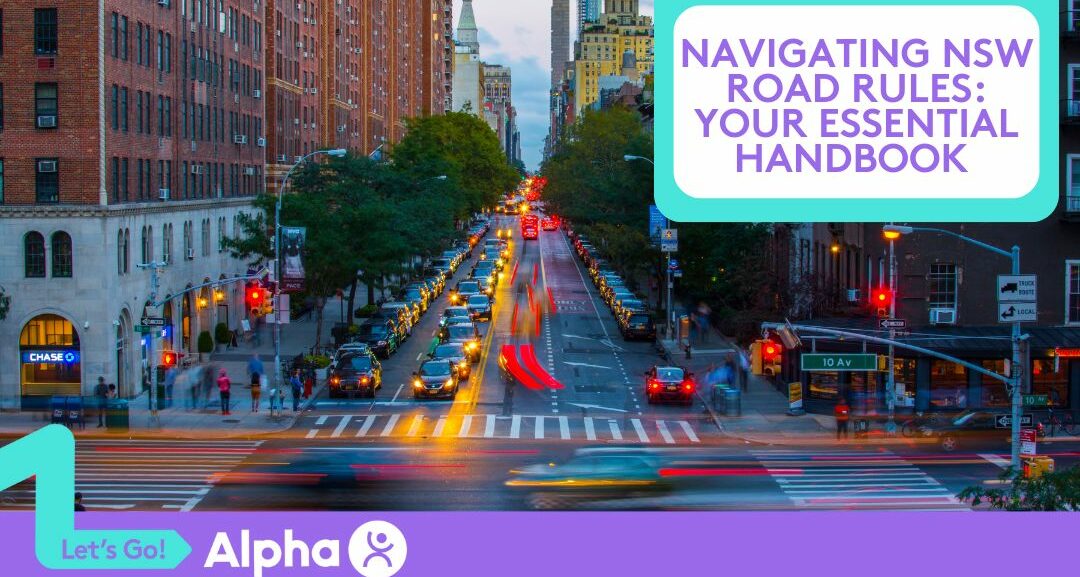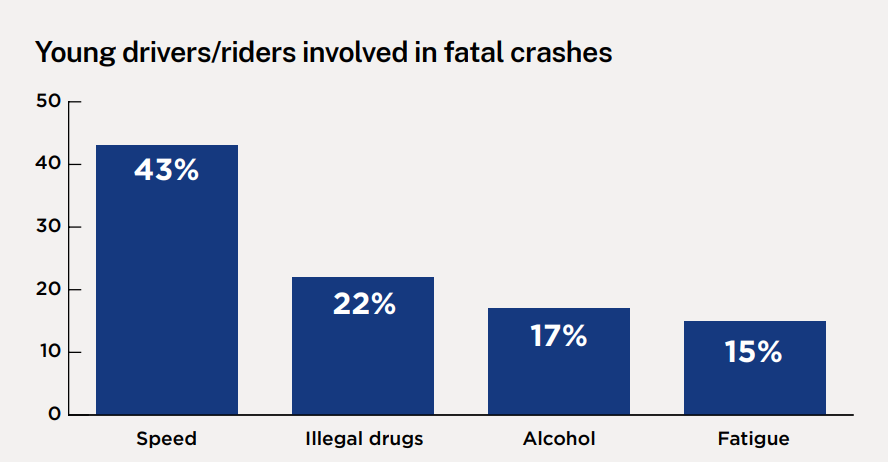Travelling through New South Wales by car is a wonderful experience, however, understanding and following the road rules is essential for a secure and pleasant trip. These regulations are in place to protect everyone on the road, including drivers, passengers, those walking, and people riding bicycles. This handbook provides key information about NSW road rules including signs, traffic lights, speed limits and rules for drivers such as licenses, mobile phone usage and seatbelt requirements. Prepare yourself to drive with assurance.
Basics of NSW Road Rules: Navigate with Confidence
Knowing the road language is key! Here’s a breakdown of essential elements:
Signs and Markings:
- Regulatory Signs (Red Circles):
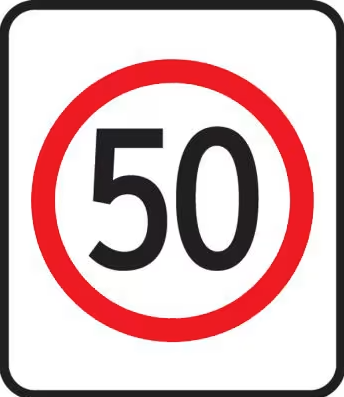
Regulatory signs, like the red circles for stop, yield, and no stopping commands – direct you clearly on actions to take.
- Variable speed limit signs
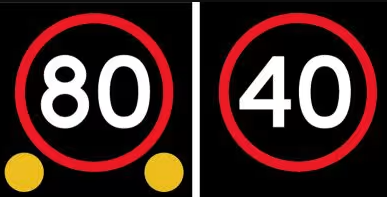
On motorways, bridges, and even in some tunnels, you might encounter electronic signs displaying the speed limit. These are called variable speed limit signs. Unlike fixed signs, the speed limit shown on these signs can change depending on real-time traffic conditions, weather, or even time of day.
- Caution Signs (Yellow Diamonds):
Be alert for potential dangers ahead such as curves, lanes coming together, or areas near schools.

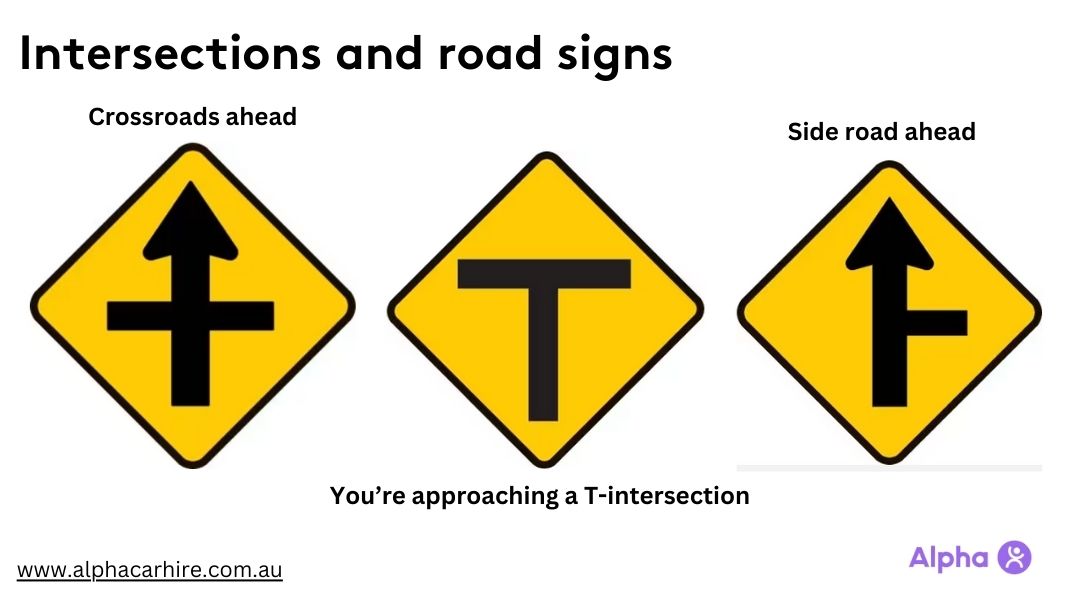
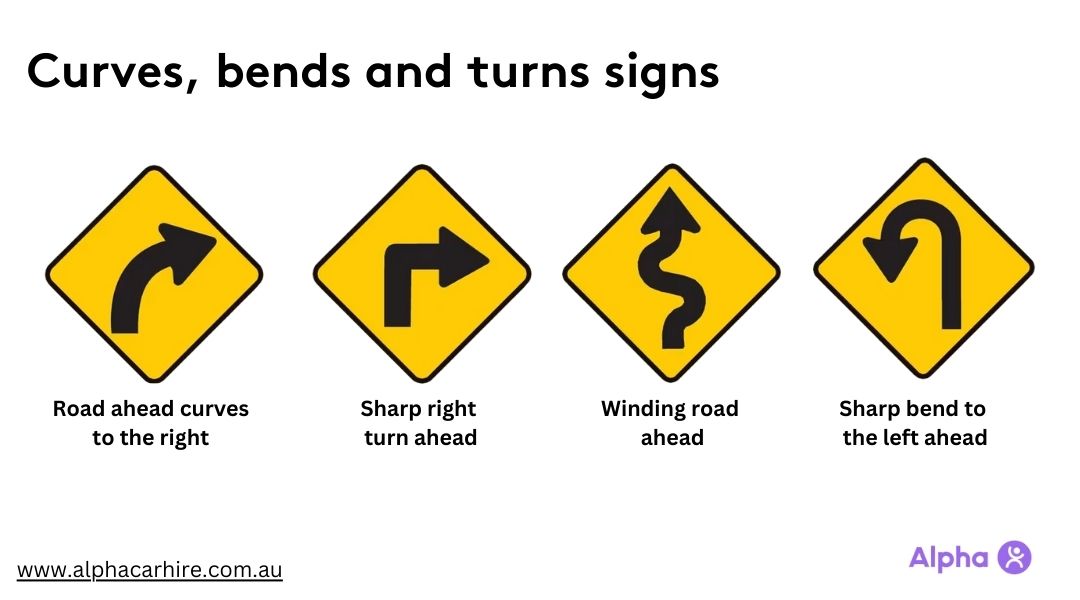
- Information Signs (Blue Rectangles): Provide helpful guidance like parking zones, speed limits, or detours.
- Lane Markings: Solid lines mean cars must stay in lane, dashed lines say you can change lanes carefully, and two parallel lines show that passing is not allowed.
Traffic Lights and Pedestrian Crossings:
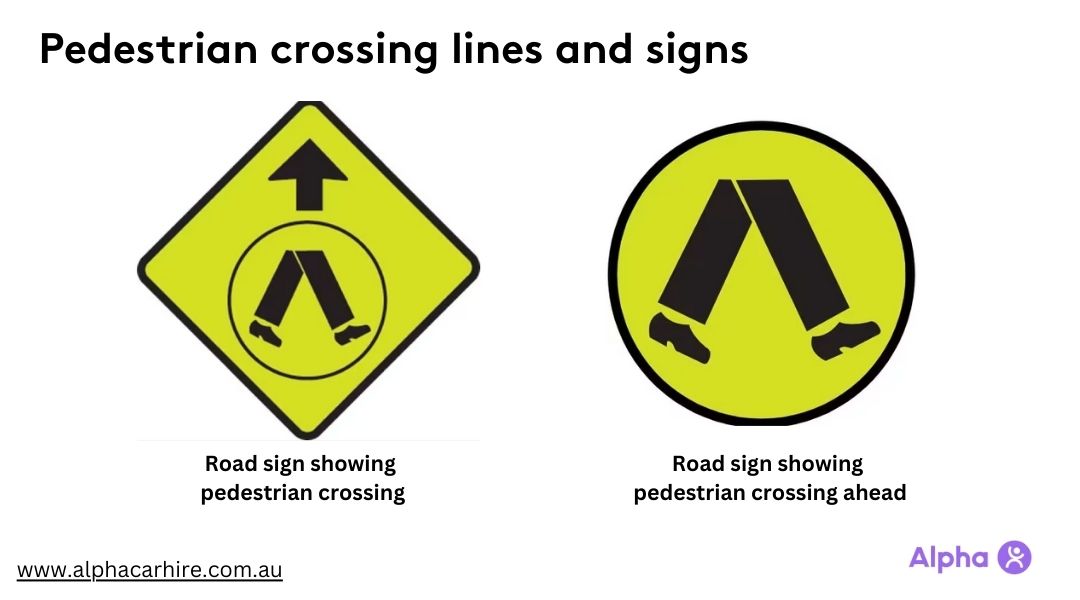
- Traffic signals: Red is for stopping, yellow tells you to get ready to stop, and green is for going. Also, pay attention to the lights that indicate when people are walking across.
- Pedestrian Crossings: When you are driving and come to marked paths for walking, zebra stripes on the road or lights for traffic control, you must let people walking go first.
Speed Limits and Restrictions:
- Speed limits are posted: Signs show the speed limits; they change based on what kind of road it is and the place, like areas where people live usually having smaller limits.
- School zones: Have reduced speed limits during designated times (usually mornings and afternoons).
- Always adjust speed: Depending on weather, traffic conditions, and visibility.
| Driver licence | Maximum speed |
|---|---|
| Learner | 90km/h |
| Provisional P1 | 90km/h |
| Provisional P2 | 100km/h |
| Heavy vehicles over 4.5 tonnes (GVM).
This includes LR, MR, HR, HC, and MC licence classes. |
100km/h |
Rules for Drivers: Stay Safe & Legal
Being a responsible driver requires following these regulations:
- Driver’s License: Hold a valid driver’s license for the class of vehicle you’re operating.
- Alcohol and Drugs: Driving while you have been drinking alcohol or using drugs is not allowed at all. If you do this, the punishment can be very strong and might result in your driving license being taken away.
- Mobile Phone Use: Using a mobile phone when driving is not allowed, only okay for emergency calls if hands-free.
- Seatbelts and Child Restraints: All people in the car need to wear a seatbelt that is correctly fitted. Children should use the right child safety seats for their age.
This includes the basic points, but remember, traffic regulations are detailed. Always check official NSW road rule sources for full information.
Rules for Pedestrians and Cyclists: Sharing the Road Safely
All people should have a secure trip on roads in NSW. This is important information for those walking and riding bicycles:
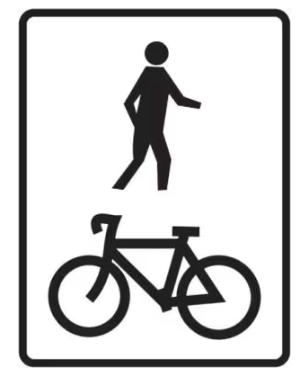
Pedestrians:
- Use footpaths and designated pedestrian crossings whenever possible.
- Obey traffic signals and pedestrian lights.
- Maintain visibility when walking at night (wear reflective clothing).
- Avoid distractions like mobile phones while crossing roads.
Cyclists:
- Wear a properly fitted helmet at all times.
- Ride on the left side of the road, following the flow of traffic.
- Use designated bike lanes when available.
- Obey traffic signals and road markings.
- Use lights and bells for better visibility, especially at night.
Rules for Special Circumstances: Be Prepared for Anything
Knowing how to navigate specific situations keeps you safe:
School Zones and School Buses:
- Exercise increased care in school areas during specific times, often in the mornings and afternoons, when there is a lower speed limit.
- Stop completely behind a stationary school bus with flashing red lights and signage.
Driving in Adverse Weather Conditions:
- Adjust speed to suit visibility and road conditions (rain, fog, dust storms).
- Increase following distances and use headlights for better visibility.
- Pull over safely if conditions become too hazardous.
Emergency Vehicles:
- Allow emergency vehicles, like ambulances, police cars and fire engines with blinking lights and loud alarms to pass.
- Drive to the roadside and halt securely until they go by.
- Keep in mind, that these are only important notes. Always look at the official NSW road rules for the latest and full details to be safe when you drive.
Parking Savvy: Understanding Parking Rules
Parking in NSW requires knowing the signs:
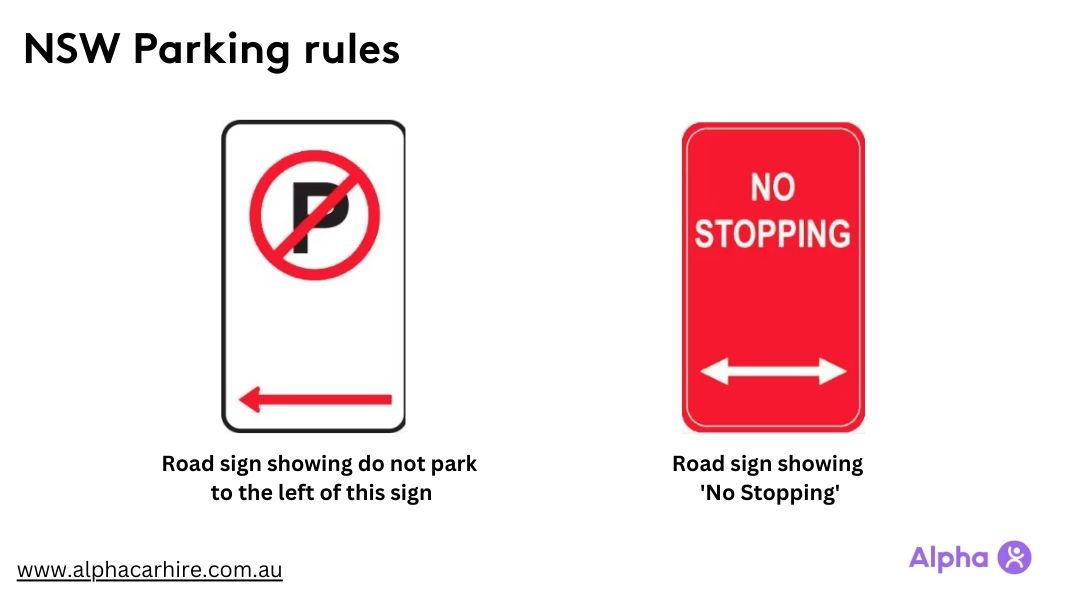 Parking Signs:
Parking Signs:
- Look for clear instructions on permitted parking times, restrictions, and fees.
- No Stopping signs are clear – they do not allow you to stop or park, not even for a short time.
- Clearway signs indicate times when parking is prohibited to keep traffic flowing freely.
Paying for Parking:
- Meters, apps, or pay machines are common for on-street parking.
- Pay attention to time limits and avoid overstaying your welcome.
Disabled Parking Permits:
- These designated spots are for vehicles displaying a valid disability permit.
- Parking illegally in these spots comes with hefty fines.
Road Respect: Sharing the Road with Courtesy
Road courtesy goes a long way in creating a pleasant driving experience for everyone:
Giving Way at Intersections:
- Give way to the cars on your right side unless signs or traffic signals tell you something different.
- Be patient and avoid risky maneuvers to get ahead.
Merging Lanes and Roundabouts:
- Indicate your intention to change lanes well in advance.
- In roundabouts, give way to vehicles already circulating before entering.
Dealing with Road Rage:
- Don’t engage with aggressive drivers.
- Maintain a safe distance and report dangerous behaviour to the authorities.
The Importance of Following Road Rules: Stay Safe & Legal
Road regulations are not merely advice; their purpose is to safeguard all individuals. Here is the explanation for why it’s important to adhere to them:
Fines and Demerit Points:
- Breaking road rules can lead to fines and demerit points on your license.
- Accumulating too many points can result in license suspension.
Consequences of Reckless Driving:
- Serious offences in traffic can lead to strict legal consequences, like losing a driving license or possibly facing time in prison.
- More importantly, reckless driving puts yourself and others at risk of accidents and injuries.
Safety First:
- Follow the rules of the road to make a secure space for you, other drivers, people walking and those riding bicycles.
- When you adhere to the regulations, it helps make driving more pleasant and less tense for all.
- Keep in mind, that this manual gives just a simple summary. For the latest and full details, make sure to check the official NSW traffic regulations sources. Drive safe!
Understanding Risk Factors for Young Drivers on NSW Roads
Each year, about 350 individuals die on the roads of New South Wales, and another 22,000 get hurt. Many of these sad events could be avoided because a lot of accidents come from dangerous actions by drivers. Here’s a breakdown of the major factors contributing to fatalities on NSW roads:
- Speeding
- Drink driving
- Drug driving
- Fatigue
- Not wearing seatbelts
The image here shows a worrying pattern: the commonness of such actions in young drivers (17 to 25 years old) who are part of deadly accidents.
Young Drivers/Riders Involved in Fatal Crashes (17-25 years old)
- Speed (43%)
- Illegal Drugs (22%)
- Alcohol (17%)
- Fatigue (15%)
Key Takeaways from the Data:
- Speeding is the cause of about 43 per cent of deadly accidents that involve young drivers.
- Drug use: Many of the accidents, around 22 per cent, happen because people drive after taking illegal drugs. This shows how unsafe it is to drive while affected by such substances.
- Alcohol: Even if it is less compared to drugs, 17% of deadly accidents with young drivers have a connection to alcohol not being handled properly.
- Feeling tired and driving is a cause of 15% of such accidents, showing how crucial it is to have enough sleep before you drive.
Top 10 Misunderstood Road Rules
Grasping the rules of the road is essential for driving safely; however, certain rules might be perplexing or misunderstood. Let us examine a list of the 10 most commonly confused traffic regulations.
- Traffic circles: Some drivers pause or fail to use turn signals properly when they are joining or leaving traffic circles. It’s important not to forget, you should give way to cars that are already moving in the circle before you go in, and show your plan to leave by using your turning signal.
- Giving Way to Pedestrians at Turns: When drivers are turning at corners, they sometimes do not let pedestrians go first, especially on right turns. Pedestrians have the priority to cross; therefore, reduce your speed and make sure they can pass without danger.
- Mobile phones: Using them hands-free is still not allowed for many drivers in different places. It’s important to ignore distractions and give all your attention to driving.
- Merging Lanes: Merging lanes is not about speed competition. Alternate with cars in the lane that is finishing, and change your velocity to be similar for an even exchange.
- Keeping Left: Maintain your position on the left side when driving on roads with multiple lanes, except if you need to pass another vehicle or make a turn. This helps traffic move without interruption and reduces the number of times cars switch lanes.
- Headlights and Fog Lights: For the headlights and fog lights, you should only use high beams when you are on a highway without any other cars coming towards you. Turn on fog lights just when there is fog or it’s hard to see.
- U-turns: U-turns are not allowed in various cases, such as at crossroads where there are no traffic signals or over two solid lines that divide the road. Make sure to look for signs and marks on the street before you make a U-turn.
- Safe Following Distances: Maintaining a Safe Distance: How far you should keep from the car ahead varies with your speed and how the road is. A useful basic measure is to use the “3-second rule,” which should be extended to 4 seconds when weather conditions are poor.
- School Zones: In areas near schools, it is important to be very careful during the times they have marked, like in the morning and afternoon. This is when they lower how fast you can go. Look carefully for kids who might be crossing the street.
- Yellow Traffic Lights: When you see a yellow light, it is a signal for stopping safely rather than speeding up to cross the junction. It serves as an alert that the red light will soon appear.
Keep in mind that traffic rules might differ a little depending on the place, so it is important to check with authoritative sources for the latest details about where you live.
Final Thoughts: Be a Responsible Road User on NSW Roads
The manual has provided you with the necessary information to drive on NSW roads confidently. It includes important topics such as recognizing road signs and markings, obeying traffic light signals, sticking to speed limits, and knowing the rights and duties of everyone using the road. Keep in mind that the rules of the road are always changing, so it’s very important to keep up-to-date with the official New South Wales resources.
When you obey the rules, it helps to keep you safe and makes things better for all people who use the road. Now that you know this, prepare yourself to drive around NSW and see its beauty!
Navigate NSW with Alpha Car Hire Sydney: Cruise with Confidence
Prepared to drive on the roads and explore NSW’s marvels? Alpha Car Hire Sydney is your go-to place. Our selection includes many dependable cars that are kept in good condition, perfect for matching what you require and how much you want to spend. If you need a car that uses less fuel for city driving or a big SUV for travelling with your family, we have these options available. Our helpful and informed team members will assist you in selecting the ideal vehicle for your trip. Reserve a rental car from Alpha Car Hire Sydney now to enjoy the liberty of travelling around New South Wales as you wish.
[/vc_column_text][/vc_column][/vc_row]


